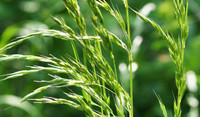
Mind the gap: use a pre-emergence herbicide to let OSR steal a march on early season weeds

It will also pay to use a range of herbicide active ingredients at both the pre- and post-emergence timings, not only to ensure effective weed control, but also to spread the risk of resistance by reducing the over-exposure of any single active.

Several grass and broad-leaved weeds are already resistant to a number of herbicides, so it pays to use a range of actives throughout the season to spread the risk and reduce the over-exposure of any single active.
The primary principle for applying a pre-emergence herbicide is to eliminate the potential for weeds to gain a march on new crops: while the efficacy of post-emergence applications can be excellent when weeds are small, rate and timing restrictions for some actives can result in long delays between the emergence of early drilled crops and the first opportunity to apply a post-em treatment.
For example, halauxifen can’t be applied until 1st September at the earliest, and only when two true leaves have emerged (BBCH12), which gives weeds plenty of opportunity to grow away, out-compete the crop, and become harder to control.
A pre-emergence herbicide should therefore be applied, especially where good crop establishment is expected – for example where Cabbage Stem Flea Beetle populations aren’t expected to pose a significant threat to OSR survival.
|
“Yield loss from poor broad-leaved weed control can range from 3% up to 73% depending on the vigour of the crop… this does not take into account the contamination of the harvested crop with weed seed which can reduce the marketability of the sample.” “The mean yield response to (pre-emergence and early post-emergence) herbicides over three years was 0.94 t/ha or 41%.” New approaches to weed control in oilseed rape |
A combination of mutually beneficial chemistries should be used throughout the programme to spread the risk of herbicide resistance and to ‘power up’ the overall efficacy of the combined pre- and post-emergence applications.
Metazachlor is the ideal building block for early weed control in oilseed rape as it provides cost-effective activity against a range of grassweeds including annual meadow grass and black-grass and versus other problem weeds including common chickweed, bur chervil and mayweed species.
The addition of clomazone into the pre-emergence programme will further enhance chickweed control as well as adding useful control of a range of broad-leaved weeds, cleavers and hedge mustard.
The benefits of using a pre-emergence herbicide in OSR
- Prevents early weed establishment, thereby reducing reliance on later treatments
- Can be applied at the optimum timing to control specific weeds
- Early weed control removes competition, enabling the young crop to thrive
Spray quality counts
In addition to using the correct combination and sequence of herbicides, it is also vitally important to ensure these chemicals are applied accurately to maximise their efficacy. Factors including application technique, spray timing, droplet size and spray drift will all have an impact on the level of weed control achieved. For more information about spraying best practice, please visit the AHDB’s knowledge library.
Power-up your programme with ADAMA’s pre-emergence herbicides
Sultan 50 SC (500 g/l metazachlor) is a residual herbicide for use in winter and spring oilseed rape to control a wide range of broadleaved weeds and annual grasses. Sultan can be used at pre- or early post-emergence (up to four leaves of the crop), thus enabling growers to delay application or to apply later if the pre-emergence window was hampered by poor conditions. Sultan also provides incidental control of Bur Chervil: a weed which is rapidly becoming increasingly troublesome for many growers.
Blanco (360 g/l clomazone) is a residual herbicide for the control of broad-leaved weeds in winter and spring oilseed rape. It can also be used in winter and spring field beans, combining peas, vining peas and potatoes
Legion (375 g/l metazachlor, 125 g/l quinmerac) is a residual herbicide for use in winter oilseed rape at pre- and early post-emergence of the crop. In addition to controlling annual meadow-grass and a range of broadleaved weeds, Legion can also be used against difficult to control weeds such as poppy and cleavers.
Latest articles

Powering up slug control: the importance of mould resistance

Powering up slug control: pellet timing and baiting point density are critical
